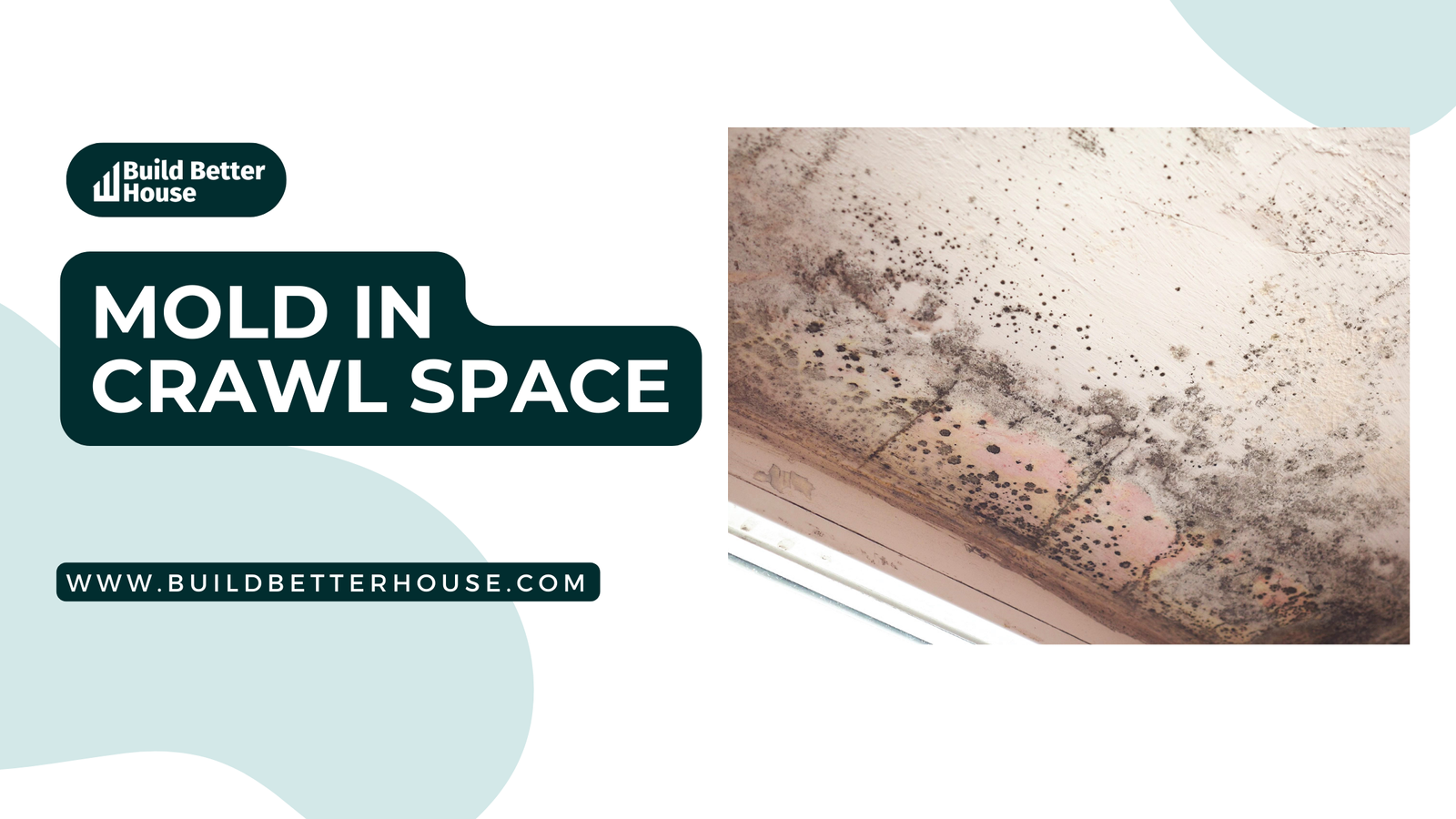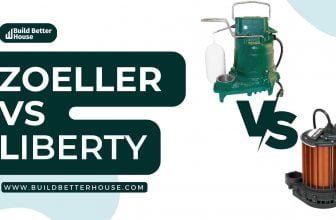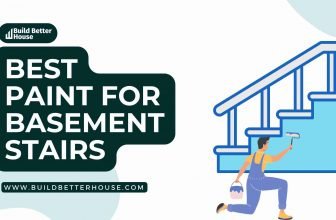Mold in Crawl Space: Effective Solutions and Prevention Tips

Mold in crawl spaces is a common issue that homeowners face, often causing unpleasant odors, structural damage, and potential health risks. Understanding the causes of mold growth in these areas can help you identify the problem early and take the necessary steps to remove and prevent it from returning.
Crawl spaces are prone to mold growth due to their damp, dark environment, and lack of proper ventilation. Additionally, moisture from external sources such as improper downspout drainage or groundwater can infiltrate and accumulate in your crawl space, providing a thriving environment for mold. Knowing how to inspect and recognize the signs of mold is essential for maintaining a healthy living environment.
Key Takeaways
- Understanding mold growth in crawl spaces is crucial for early identification and prevention.
- Proper inspection and knowledge of mold types can help you deal with potential health risks.
- Taking measures to remove and prevent mold ensures a healthy living environment and protects structural integrity.
Understanding Mold in Crawl Spaces
Mold in crawl spaces is a common issue that can lead to serious health problems and structural damage if left unaddressed. As a homeowner, it’s important to understand the types and causes of mold growth in your crawl space, as well as how to identify and address the problem.
There are various species of mold that can grow in crawl spaces, including black mold, white mold, and yellow mold. Some common types of mold you may encounter are:
- Black mold: This is one of the most dangerous types of mold, as it can produce toxic compounds called mycotoxins that can cause severe health problems. Black mold is usually dark green or black in color and has a slimy texture.
- White mold: This type of mold is generally less harmful than black mold, but it can still cause allergies and other health issues. White mold is typically powdery and white or light gray in color.
- Yellow mold: Yellow mold can be bright yellow or orange in color and may have a slimy or powdery texture. While not as toxic as black mold, some species of yellow mold can still cause respiratory issues and other health problems.
Mold growth in your crawl space can be due to a variety of factors, such as poor soil conditions, a high water table, or insufficient ventilation. The moist, dark environment of a crawl space provides an ideal breeding ground for mold to thrive.

To prevent mold growth in your crawl space, you should:
- Ensure proper ventilation to reduce humidity levels.
- Maintain a well-draining soil to prevent standing water in the area.
- Inspect and repair any water leaks or damage in your crawl space.
If you suspect that you have mold in your crawl space, it’s important to address the issue immediately. Using gloves and a mask, you can scrape away a small area of suspected mold growth with a screwdriver. If it easily scrapes away, it might be mold, but some surface staining may remain. Cleaning the affected area with a bleach and water solution can help remove the mold, but for extensive mold growth or hard-to-reach areas, it’s best to contact a professional for thorough remediation.
Causes of Mold in Crawl Spaces
Mold in crawl spaces can be a result of various factors, all of which can create the perfect environment for mold growth. Understanding these factors can help you prevent mold in your crawl space and maintain a healthy home environment.
One of the primary causes of mold in crawl spaces is moisture. Moisture can accumulate in your crawl space due to a variety of reasons, such as poor drainage, leaky pipes or plumbing issues, and high humidity levels. When moisture is present, it creates a breeding ground for mold to grow. Ensure that your foundation is in good condition and free of cracks, which can allow water to seep into your crawl space.
Your crawl space’s humidity level also plays a significant role in mold growth. High humidity can create condensation on surfaces, like your subfloor, pipes, and walls, leading to mold growth. To prevent this, ensure adequate ventilation and consider using a dehumidifier to maintain the humidity level below 50%.
Gutters and downspouts should be well-maintained and functioning properly to prevent water accumulation around your foundation. Make sure that gutters and downspouts are clear of leaves, soil, or other debris that can obstruct the flow of water. They should also be designed to direct water away from your home so it doesn’t accumulate around the foundation, leading to moisture issues in the crawl space.
It’s essential to inspect your plumbing system for potential leaks or issues that could cause moisture build-up in your crawl space. Check pipes, valves, and fittings for signs of deterioration or damage that could lead to leaks and address any problems as soon as possible.
In summary, to prevent mold in your crawl space, you should focus on maintaining a dry, well-ventilated environment. Keep your foundation free of cracks, monitor humidity levels, maintain gutters and downspouts, and inspect your plumbing regularly to minimize moisture and reduce the risk of mold growth.
Health Risks Associated with Mold
Mold in your crawl space can impose dangerous health risks for you and your family. When mold spores enter the indoor environment through air vents or your subfloor, they can lead to various respiratory problems and allergic reactions.
Exposure to mold spores can cause symptoms like coughing, wheezing, and a stuffy nose, which may be particularly harmful for individuals suffering from asthma or immune-compromised individuals. In some cases, toxic mold presence can lead to more severe health issues, such as lung infections for those with chronic lung disease.
It is crucial to be aware of the signs of mold in your home, as they can indicate the need for immediate attention. Mold growth often appears as discolorations on surfaces, with a musty odor lingering in the space. Ensuring proper ventilation, moisture control, and immediate remediation for any leaks can help prevent the growth of mold.
To summarize, mold in your crawl space can pose various health risks, primarily due to the presence of mold spores. These risks include allergic reactions, respiratory problems, and potentially more severe issues for individuals with pre-existing conditions such as asthma or chronic lung disease. It is essential for you as a homeowner to be vigilant about any signs of mold, and promptly address any issues to maintain a safe and healthy living environment.
Signs and Inspection of Mold in Crawl Spaces
When inspecting your crawl space for mold, there are several signs to look for. A musty smell in your home can indicate the presence of mold. To identify whether you have mold in your crawl space, you can go through a number of steps:
First, ensure that all gutters and downspouts are working correctly, effectively directing water away from your foundation. This will help prevent water from seeping into your crawl space and creating an ideal environment for mold growth.
Next, check below-ground walls for cracks, which can also lead to water intrusion. You can use a moisture meter to measure the dampness in the crawl space. Higher moisture levels may indicate the presence of mold or potential mold growth.
As a homeowner, inspect the crawl space for visible mold growth, water damage, or dampness. Additionally, keep an eye out for plumbing issues, such as leaks or dripping pipes, which can contribute to mold growth.
If you’re uncertain of what to look for or need assistance, consider hiring a trained professional to inspect your crawl space. They can easily distinguish between mold growth and other substances, such as mineral deposits or residues.
During the inspection, they will:
- Assess water damage by checking for signs of water intrusion, standing water, moisture stains, or dampness.
- Check for structural issues, such as cracks, shifting, or settlement of the crawl space floor.
- Inspect for signs of significant deflection or settlement.
Remember, understanding the signs and conducting regular inspections can help you prevent mold growth in your crawl space and keep your home healthier.
Types of Mold in Crawl Spaces
In your crawl space, various types of mold can grow and thrive due to the damp and dark conditions. Here are some common molds you might encounter:
1. Black Mold (Stachybotrys chartarum): This slow-growing but resilient mold prefers consistently damp surfaces with a healthy cellulose content, such as wood, drywall, and wallpaper. When it’s damp, Stachybotrys has a slimy, glossy texture. It is known for releasing mycotoxins that can cause serious allergic reactions.
2. White Mold: White mold predominantly grows on exposed soil and wooden joists in crawl spaces. It usually appears fuzzy and can be confused with efflorescence, a crystalline deposit of salts on surfaces. However, efflorescence is not hazardous to your health, unlike white mold, which may cause respiratory issues or allergic reactions.
3. Yellow Mold (Serpula lacrymans): This type of mold is known for its yellow color and can cause significant damage to wood in crawl spaces, as it feeds on the cellulose. Yellow mold is also called “house-eating fungus” due to its destructive nature.
To prevent mold growth in your crawl space, it’s essential to control moisture levels and have proper ventilation. Periodically check for water leaks, use a vapor barrier, and ensure crawl space vents are functioning correctly. In case you detect mold growth, it’s crucial to address the issue promptly and remove the mold with appropriate remediation methods.
Remember, when dealing with mold, it’s essential to confirm its presence before taking any remediation steps. You might need professional assistance to identify the type of mold in your crawl space accurately and implement the best course of action for its removal.
How to Remove Mold in Crawl Spaces
Mold in your crawl space can be a serious issue, affecting air quality and potentially causing structural damage to your home. To effectively remove mold from a crawlspace, follow the steps outlined below.
- Assess the situation: Before starting any mold removal work, put on protective equipment, including gloves, a mask, and goggles. Be sure to properly ventilate the crawl space by opening vents or installing fans.
- Choose your cleaning solution: Select a mold-killing cleaning solution that works best for your situation. Some common options include bleach, white vinegar, and hydrogen peroxide. Whichever solution you choose, ensure you use it according to the manufacturer’s instructions.
- Scrub the affected area: Using a stiff-bristle brush, scrub the moldy wood surfaces in your crawl space. Be sure to remove all visible mold growth from the wood. For large or stubborn patches of mold, you might need to use a stronger cleaning product or consider employing a mold removal service.
- Dry the crawl space thoroughly: After scrubbing, ventilate the area to allow it to dry completely. You can use fans, dehumidifiers, and heaters to expedite the drying process. Make sure the crawl space is devoid of any excessive moisture before you move on to the next step.
- Apply mold preventative: Once the crawl space is clean and dry, apply a mold preventative solution to help prevent future growth. You can find various products at your local hardware store, many of which are designed specifically for treating wood in moist environments like crawl spaces.
- Monitor the situation: Regularly check your crawl space for signs of new mold growth, and address any potential problems promptly. Proper maintenance and vigilance will help prevent future mold issues in your crawlspace.
By following these steps, you can safely and effectively remove mold from your crawl space, protecting both your home and your health.
Hiring a Mold Removal Company
When dealing with mold in your crawl space, it’s often necessary to hire a trained professional to ensure proper and safe removal. A mold removal company has the expertise needed to address the issue effectively and maintain good indoor air quality in your home.
Hiring a mold removal company gives you the confidence that the issue will be dealt with properly. They have the necessary tools and knowledge to assess the extent of mold infestation and determine the best course of action for removal and prevention.
In selecting a mold removal company, you should look for a business with certified and experienced technicians. These professionals should understand the complexities surrounding mold issues and be well-equipped to handle them. It’s essential to choose a company that can provide thorough inspections and properly identify the root cause of the mold problem.
Cost is another factor to consider when hiring a mold removal company. The average cost for inspecting and removing mold from your crawl space can range from $1,500 to $4,000, depending on the size of the infestation. While price shouldn’t be the sole determinant, it’s essential to find a company that offers competitive rates and excellent service.
Communication is also vital when working with a mold removal company. The professionals should be able to explain the process clearly and provide updates on work progress. They should also give you advice on preventing future mold growth and maintaining a healthy indoor environment.
Remember, addressing mold in your crawl space is crucial for maintaining the structural integrity of your home and ensuring good indoor air quality. Hiring a reputable mold removal company will ensure the issue is tackled effectively and safely, protecting your home and wellbeing.
Preventing Future Mold Growth
Preventing mold growth in your crawl space is essential for maintaining a healthy home environment. By addressing moisture problems and promoting proper air circulation, you can protect your property from mold and mildew damage.
One of the key steps to prevent mold growth in your crawl space, and even your basement, is to control the humidity levels. Using a dehumidifier can help you accomplish this task, as mold growth begins when humidity levels reach 60 percent. A dehumidifier will help maintain optimal humidity, preventing the conditions that facilitate mold growth.
Proper ventilation is equally important in preventing mold growth. Ensuring there is adequate air flow in your crawl space helps maintain a dry environment and prevents moisture buildup. You can achieve effective air circulation by installing vents or by using a fan to circulate air. Additionally, check your HVAC ducts for any leaks or issues that could affect ventilation and cause moisture buildup in your crawl space.
Another effective method to prevent mold growth is the installation of a vapor barrier. This is usually done by laying sheets of thick plastic sheeting on the ground and sealing it to the walls of your crawl space. The vapor barrier helps keep moisture from the ground from penetrating the crawl space area, reducing the chances of mold growth on surfaces like wood, insulation, and concrete.
When it comes to insulation, using mold-resistant insulation can limit mold growth in your crawl space. These products are specifically designed to resist mold and mildew growth, providing a layer of protection for your property.
In case you’ve already had a mold problem in your crawl space, it’s essential to take remediation measures to prevent future mold growth. Mold remediation involves removing the existing mold, addressing the moisture issues causing the mold growth, and taking necessary precautions, such as cleaning with a safe solution like ammonia, to ensure mold doesn’t return.
By combining these preventative measures, you can effectively keep your crawl space mold-free, creating a healthier environment for you and your family.
Common Myths About Mold in Crawl Spaces
There are several misconceptions surrounding mold in crawl spaces. To prevent mold growth and protect your home, it’s essential to separate the facts from the myths. In this section, we’ll debunk some common myths about mold in crawl spaces.
Myth 1: Mold in crawl spaces isn’t harmful. The truth is, mold in your crawl space can negatively affect your home’s structural integrity and the quality of indoor air. Mold can cause wood rot, damage floor joists, and produce musty smells that can permeate your living space.
Myth 2: A little mold is acceptable. Although mold spores are naturally present in the environment, any visible mold growth in your crawl space indicates an underlying moisture problem. Addressing the moisture issue is critical to stopping mold growth and protecting your home from potential damage.
Myth 3: Mold can’t grow in a well-ventilated crawl space. Even with proper ventilation, mold can still grow if moisture levels are high. You need to ensure all sources of moisture, such as leaky gutters, downspouts, and groundwater, are addressed to prevent mold growth. Installing a vapor barrier can also help keep moisture levels in check.
Myth 4: Bleach can effectively remove mold. While bleach may kill some surface mold, it won’t necessarily eradicate its root system, allowing mold to return quickly. Additionally, using bleach on porous surfaces like wood can cause further damage. Instead, consider hiring a professional to remove mold from your crawl space safely and effectively.
Remember, the key to preventing mold growth in your crawl space is controlling moisture levels. Debunking these common myths and understanding the facts can help you protect your home from potential mold-related problems.
Conclusion
Mold in your crawl space can pose significant risks to your home and your family’s health. Ensuring proper preventive measures are in place is crucial for keeping mold at bay.
Firstly, make sure all gutters and downspouts are working correctly to keep water away from your foundation. This helps prevent the moisture from seeping into your crawl space and creating the ideal environment for mold growth.
Second, inspect below-ground walls for cracks that might allow water infiltration. Repair any cracks as soon as possible to minimize the potential for mold to take hold.
Additionally, be aware that certain mold species may require continuous, heavy saturation and a bit of bad luck to grow in crawl spaces. However, even a smaller mold infestation should not be ignored. If you find mold in your crawl space, it is crucial to address the problem promptly to prevent further growth.
During the construction phase of a home, it’s essential to plan for proper drainage in the crawl space. Any drains must be directed to run off and terminate outdoors or to an interior crawl space drain or sump pump.
By following these measures, you can reduce the likelihood of mold growth in your crawl space and provide a safer, healthier environment for you and your family. Remain vigilant and proactive in addressing any potential issues, and your home will stay protected against the dangers of mold.
Frequently Asked Questions
What causes mold growth in crawl spaces?
Mold growth in crawl spaces occurs due to excessive moisture, poor ventilation, and the presence of organic materials. Leaking pipes, groundwater seepage, and inadequate gutter systems can contribute to moisture buildup. Mold spores can enter the crawl space through open doorways, windows, and vents, where they can grow and thrive if conditions are suitable.
How can I prevent mold in my crawl space?
To prevent mold in your crawl space, ensure proper ventilation to maintain low humidity levels. Regularly inspect and maintain your gutters and downspouts to direct water away from your foundation. If you find any cracks in below-ground walls, repair them promptly. Additionally, address any leaking pipes and keep the space clean from debris to reduce the chances of mold growth.
What are the potential health problems associated with mold in crawl spaces?
Mold in crawl spaces can lead to allergic reactions including runny noses, itchy eyes, headaches, and respiratory problems. It can also cause unpleasant musty odors, which can migrate upwards into your living space.
What are the signs of mold presence in a crawl space?
Signs of mold presence in a crawl space include strong, musty odors, allergic symptoms, and visible moldy growth on surfaces such as floor joists, insulation, and baseboards. In some cases, you may also see discolored or stained areas on materials in the crawl space.
What is the best method for mold removal in crawl spaces?
The best method for mold removal in crawl spaces involves identifying and addressing the moisture source, followed by professional remediation. Licensed professionals will perform a thorough cleaning and treatment to ensure complete removal, followed by preventive measures to keep the mold from reoccurring.
Should I be concerned about white mold in my crawl space?
White mold in your crawl space can cause similar problems as other types of mold, affecting air quality and potentially leading to health issues. It is essential to address any white mold growth by identifying and addressing the moisture source, and hiring a professional to remove it to prevent future growth.






